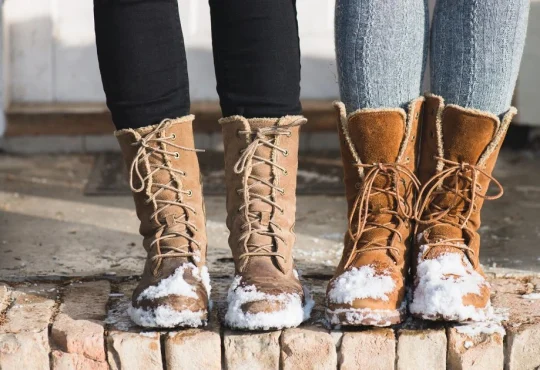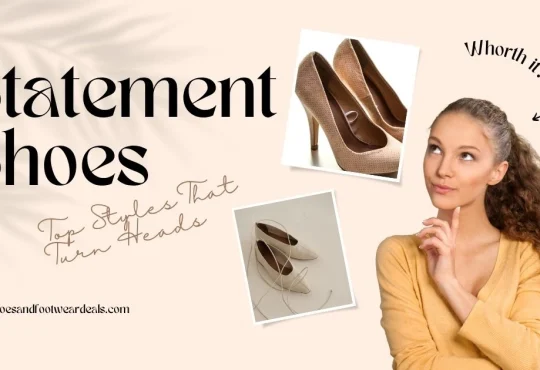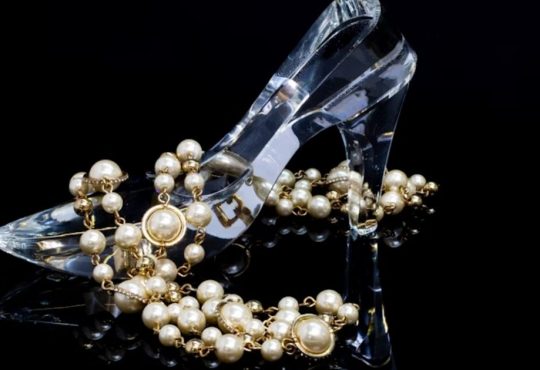Investing in high-quality shoes isn’t just a fashion choice—it’s a game-changer for your comfort, confidence, and wardrobe longevity. But with all the options out there, it’s easy to get distracted by a shiny finish and forget to check what really matters. Whether you’re buying dress shoes, sneakers, boots, or loafers, here’s how to spot the pairs that are truly built to last.
10 Expert Tips to Buy Shoes That Will Last for Years
1. Check the Materials First
The foundation of a good shoe is in its materials—cut corners here, and you’ll feel it with every step. Quality materials don’t just last longer; they also mould to your foot over time, offering the comfort that cheap alternatives can’t match. Full-grain leather is the gold standard when it comes to durability and craftsmanship. It’s tough, naturally breathable, and ages beautifully, developing a rich patina that tells a story over time. If you’re going leather, this is the tier to aim for. Suede, while softer and more flexible, should also be top-grade—look for versions that are resistant to scuffing and water to ensure they keep looking sharp.
Outsoles matter, too. Rubber soles are a classic choice for everyday comfort, but Vibram soles are a step above—designed for grip, shock absorption, and all-day support. For casual or athletic fabric shoes, inspect the weave: tightly woven canvas or high-performance textiles signal better quality, meaning they’ll hold up to wear without fraying at the seams.
2. Inspect the Stitching
Stitching is like the handwriting of a well-made shoe—it tells you a lot about the craftsmanship behind it. Sloppy stitching isn’t just a cosmetic flaw; it’s a red flag that the shoe was rushed or poorly made. Uneven lines, loose threads, or fraying edges? That’s your cue to walk away.
Quality stitching should be uniform, tight, and clean across the entire shoe, especially around high-stress areas like the toe, heel, and sides. You’ll also want to pay attention to the thread itself—premium brands don’t cut corners here. They often use strong synthetic threads like nylon or polyester, which can handle wear and tear without breaking down. Bonus points if the stitching is double or reinforced, especially in boots or shoes meant for heavy use. Basically, if the stitches look like they were done with care, the rest of the shoe probably was, too.
3. Look Into the Construction Method
Think of a shoe’s construction like its skeleton—it holds everything together and determines how well it ages. Cheaply made shoes might look fine at first, but they’ll fall apart faster than you can say “clearance sale.” That’s why understanding the construction method is key if you’re aiming for long-term wear and real value. Goodyear welting is the gold standard for durability and water resistance. It involves stitching a welt (a strip of leather) to both the upper and the sole, creating a layered barrier that’s tough, repairable, and perfect for boots and formal shoes. It adds some heft, but that’s the price of longevity.
Blake stitching, on the other hand, is sleeker and lighter. The sole is stitched directly to the upper, giving a more streamlined look that’s ideal for dress shoes. While not quite as water-resistant as Goodyear, it offers better flexibility and a clean silhouette. And don’t underestimate the power of handcrafted shoes. Skilled artisans often catch and correct flaws that machines miss, adding thoughtful details that elevate the entire pair. Still, high-end machine-made shoes can be equally impressive if they’re well-designed and precisely assembled. Either way, construction tells a story, and good shoes are built to last through chapters.
4. Test the Sole
You can tell a lot about a shoe just by flipping it over. The sole isn’t just the bottom layer—it’s the foundation of comfort, grip, and longevity. A flimsy sole? That’s a fast track to sore feet and quick replacements. Leather soles are a staple in classic footwear. They offer a sleek, elegant finish and a satisfying click on polished floors. Ideal for formal settings, they mould to your stride over time but aren’t great for rain or heavy walking. Think boardroom, not sidewalk marathon.
Rubber soles, on the other hand, are the go-to for practicality. They’re grippy, weather-friendly, and great for everyday wear. But feel them—if they’re too soft or spongy, they’ll likely wear down fast. You want something firm and supportive, not flimsy. And here’s a quick trick: do the flex test. Hold the shoe at both ends and bend it gently. It should flex where your foot naturally bends—right under the ball, not in the middle or not at all. If it passes the test, you’re on the right track to all-day comfort.
5. Feel for the Comfort Factor
Style means nothing if your feet are silently screaming. Even if the shoe looks like a work of art, if it pinches, rubs, or feels like it’s throwing your posture off, it’s not worth it—trust your feet; they don’t lie. Start with the basics: arch support and cushioned insoles. Good shoes should feel like they’re working with your foot, not against it. If you feel pressure points or need to “break them in” painfully, they’re not built right for you.
The heel is another key checkpoint. Stand still and notice how your weight is distributed—there should be no wobbling, leaning, or sinking on one side. A well-structured shoe feels balanced and stable from the get-go. Bottom line? If it doesn’t feel good in the first few minutes, it probably won’t magically improve with time.
6. Pay Attention to the Heel and Toe Structure
When it comes to shoe longevity, the toe and heel do the heavy lifting. These are the high-impact zones, constantly taking hits from walking, pivoting, driving—you name it. If they’re not built to last, the rest of the shoe won’t stand a chance. A high-quality shoe will feature a structured toe box that maintains its shape over time. It should feel supportive yet forgiving, giving your toes room to breathe without turning the front of your shoe into a mushy mess. This is especially important in leather shoes, where poor structure leads to premature creasing and an unkempt look.
The heel cup (the internal structure at the rear) should be sturdy and provide ample support. A good test? Try pinching or pressing the back of the shoe—if it folds in like paper, skip it. This part of the shoe is crucial for stability, alignment, and preventing heel slippage. A collapsing heel also means the shoe will start to feel uneven or lose its fit far too quickly.
The bottom line? Solid construction in these pressure zones means better balance, support, and style over time.
7. Evaluate the Linings and Insole
The interior is just as important, especially when it comes to footwear. You could have the best-looking pair on the shelf, but if the interior’s a mess, your feet (and your investment) are going to suffer. Full-leather linings are the gold standard. Over time, leather linings also mould to the shape of your foot, offering a custom fit that synthetic materials simply can’t match.
As for insoles, steer clear of anything that feels like thin foam or plastic. These materials flatten quickly, offer little support, and tend to trap heat (hello, sweaty feet). Instead, look for cushioned insoles with arch support or, better yet, leather-topped footbeds that combine structure and comfort. Bonus points if they’re removable—it makes it easier to air them out or swap in your orthotics.
Great interiors aren’t flashy, but your feet will thank you every step of the way.
8. Smell Test (Yes, Really)
It might feel odd in a store, but your nose can tell you a lot about a shoe’s quality. Rely on your intuition—and your sense of scent. Genuine leather has a rich, earthy aroma that’s hard to fake. It’s subtle but unmistakable—kind of like that new car smell, but for your feet. It signals quality materials and proper craftsmanship. On the flip side, if the shoes hit you with a sharp whiff of chemicals, glue, or plastic, that’s your cue to walk away (preferably in better shoes).
That synthetic scent usually means corners were cut—cheaper materials, excessive adhesives, and mass production without much care. And it’s not just about luxury—those synthetic fumes can also mean less breathability and more wear and tear down the road. So yes, go ahead and take a discreet whiff. If it has a synthetic odour, it’s likely made with low-quality materials.
9. Check the Overall Balance and Symmetry
This one’s subtle but speaks volumes. Set the shoes side by side on a flat surface and take a step back—literally. A well-made pair should sit flat and even, with no tilting, wobbling, or rocking. The toe and heel should be aligned, the soles flush, and the silhouette mirrored from left to right. If one shoe leans or the shape feels lopsided, it’s a sign of poor construction or quality control. And no, “breaking them in” won’t magically fix it.
Also, pay attention to symmetry—uneven stitching lines, crooked logos, or slightly off shapes are small details that often hint at mass production shortcuts. Bottom line? Quality shoes stand tall and balanced. And so should you.
10. Know the Brand’s Reputation
Do your homework—brand reputation matters. Established brands with a solid history of craftsmanship and positive reviews tend to put more into quality control, ensuring that their shoes consistently meet high standards. Before buying, check out what others are saying. Pay attention to consistent feedback about long-term wear. Also, look for brands that are transparent about their sourcing practices and manufacturing processes. Brands that value craftsmanship will often share details about their materials, production methods, and the artisans behind the shoes.
Ultimately, a reputable brand often means you’re not just buying a product—you’re investing in its legacy of quality.
Step Into Quality—Choosing Shoes That Last
A good pair of shoes is more than just stylish—they’re your everyday companion. By focusing on material, construction, fit, and those small but important details, you’ll be able to spot the difference between fast fashion and lasting quality. So next time you’re shopping, keep these ten tips in your back pocket—and your feet (and wallet) will thank you later.





